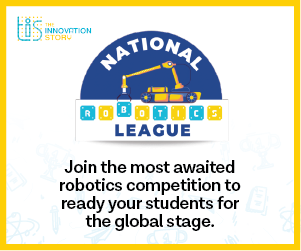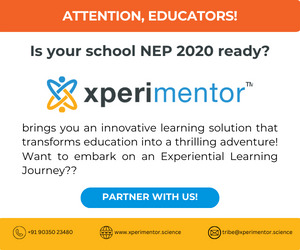With appropriate tools and strategies, educators have the opportunity to harness the power of AI to provide personalised, engaging and effective learning experiences for children writes Robinson Philipose In recent years, artificial intelligence (AI) has made headlines around the world and scared educationists with alarmist predictions of widespread testing malpractice. But on the other side, AI has great potential to transform traditional teaching and enable teachers and students in K-12 education. Teaching has traditionally been a manual and human-intensive vocation in which teachers must design lesson plans, develop course material and deliver lectures. While this pedagogy has worked in the past, it is time consuming and leaves little room for innovation and experimentation. It’s a one-size-fits-all pedagogy. India’s normative 1:40 teacher-pupil ratio makes it difficult to personalise the education of every student. Like a doctor attending many patients prescribes medicines based on individualised lab reports, similarly a teacher should be able to address the learning deficit of every child in her classroom. AI makes this possible. With the advent of AI, educators now have powerful tools and technologies to create personal, engaging, effective and customised learning experiences for their students. Here are some ways AI can transform teaching-learning in K-12 education: Diagnostics. The first step in personalising education is to diagnose every child’s learning deficit in each subject, not possible within a 40-minutes period. This humanly impossible task is made easy with an AI-powered common test in every subject which will immediately disclose the learning deficit of every child in a classroom of 40 students in just three minutes. Personalised learning. AI can report the progress and performance of every student to enable customised teaching to suit individual needs and preferences. Traditional pedagogies oblige educators to take a one-size-fits-all approach, delivering the same content to all students, regardless of individual learning style or pace. On the other hand, AI algorithms can assess the strengths and weaknesses of every child and prescribe lesson plans accordingly, enabling her to learn at her own pace for better retention and comprehension. Smart tutoring systems. AI can also be used to develop smart tutoring systems (STS) that provide instant feedback and guidance to students as they learn and adapt to their learning styles and capabilities, thus providing more personalised and effective learning experiences. These tutoring systems use AI algorithms which provide personalised feedback and guidance to students throughout their learning. Natural language processing. AI chatbots can be used to answer students’ queries in real time, providing instant guidance and assistance. This is particularly useful for students who have difficulty understanding certain concepts and need help at home. AI-powered chatbots can answer routine student questions and clear assignment doubts. Natural language processing (NLP) is the backbone of chatbots, allowing them to understand and respond to human speech. Automated grading. Furthermore, AI can automate the assessment process, freeing teachers to attend to necessary admin duties. Simultaneously, it provides students faster assignment feedback thus enabling them to improve their grades. Moreover, AI assessments are entirely based on data and…
Harnessing AI power in K-12 education
EducationWorld June 2023 | Magazine Teacher-2-teacher


























